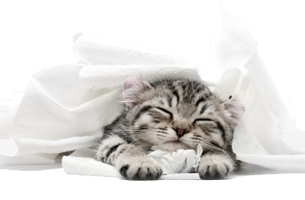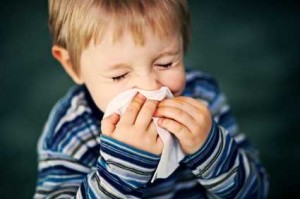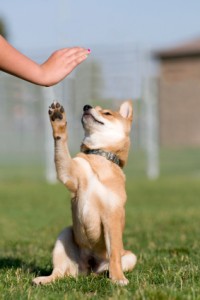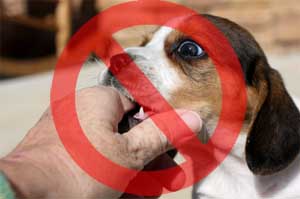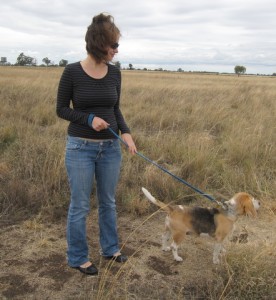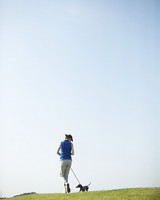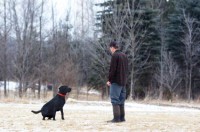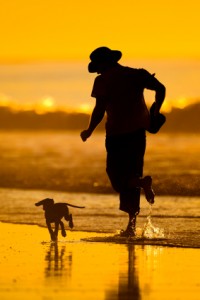Everytime we have a wild storm – and we’ve had plenty this season – dogs come to us with injuries from escaping their yards, destroying the garden and getting involved in accidents. Some dogs panic as soon as the sky darkens and the wind picks up, others cower when the thunder, lightning or rain arrive.
 Signs of storm phobia range from mild – pacing, shaking, drooling, hiding – to extreme – blind panic and hyperthermia, escape from the house yard, and destruction of garden or house items. While trying to escape the storm panicking dogs are hit by cars, attacked by other dogs, injured on fences and fallen trees, and lost many kilometers from home.
Signs of storm phobia range from mild – pacing, shaking, drooling, hiding – to extreme – blind panic and hyperthermia, escape from the house yard, and destruction of garden or house items. While trying to escape the storm panicking dogs are hit by cars, attacked by other dogs, injured on fences and fallen trees, and lost many kilometers from home.
During the storm you can help your pet cope and minimize his distress.
Keep any medication prescribed by your veterinarian on hand. Event medications work best if given at least 30 minutes prior to the stressful situation. Some severely affected animals need daily medication during the storm season.
Pitfalls to avoid:
– Never use punishment as it will only increase your pet’s distress.
– Avoid petting and consoling your pet during the storm as he may interpret the your protection as a reward for his behavior.
– Try to remain calm as a model for your pet.
Useful interventions:
– If possible, don’t leave your pet alone during the storm.
– Create a safe and secure environment for your pet: a dark room screened from lightning flashes or a room where sound is muted.
– If your pet has found a hiding place, do not drag him out. He may become aggressive.
– Loud music, music with a strong beat or white noise such as an exhaust fan muffles distressing noises for some pets.
– Distract your pet with a favourite toy, a game or some obedience training.
– Every time there is a clap of thunder give your pet a treat. If he is too anxious to take a treat smear peanut butter or cheese spread on the gums. After many repetitions he will start to positively associate the noise with the treat.
– A head collar and leash calms some dogs and gives you control.
– Train your dog to relax on cue on a mat or bed using reward based techniques. Gradually delay the reward, until your dog can lie calmly on the mat for extended periods. Only bring the mat out for training sessions, so that it becomes associated with a relaxed down-stay. Bring the mat out during storms/fireworks or other times the dog is anxious.
– Alternatively create a positive association with a particular place. Feed him, give him treats, and play with him in this special area. Your dog will associate feeling safe and security with this place and may take themselves off to their safe area in a storm. This is helpful if you are not home during a storm. Never use the area for punishment or time-outs.
– Recordings of storms can be used for systematic desensitization, although many dogs do not respond fearfully to recordings. They only show fear of storms when associated cues like wind, rain, darkening skies, or changes in barometric pressure are present.
– Dog Appeasement Pheromone (DAP) mimics a natural pheromone that calms and relaxes dogs. It comes as a diffuser that plugs into a power outlet and is left on over the storm period.
Medication
Before starting on anxiety medication we do a full physical examination and blood tests to rule out any medical problems and to ensure that the liver and kidney are functioning normally.
Medication helps your dog to experience a storm without feeling anxious. He learns that the noise is not so scary and will respond better to the recommendations above. Once he is consistently relaxed during a storm the dose is gradually reduced until he is completely weaned off the drug.
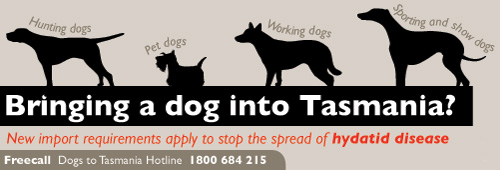 Tasmania is the only state in Australia that is free of hydatid tapeworms. And they want to keep it that way. So if you visiting Tasmania with your dog – and several of our clients do – then it is worthwhile reading Tasmania DPI’s brochure about Bringing a dog into Tasmania.
Tasmania is the only state in Australia that is free of hydatid tapeworms. And they want to keep it that way. So if you visiting Tasmania with your dog – and several of our clients do – then it is worthwhile reading Tasmania DPI’s brochure about Bringing a dog into Tasmania.

